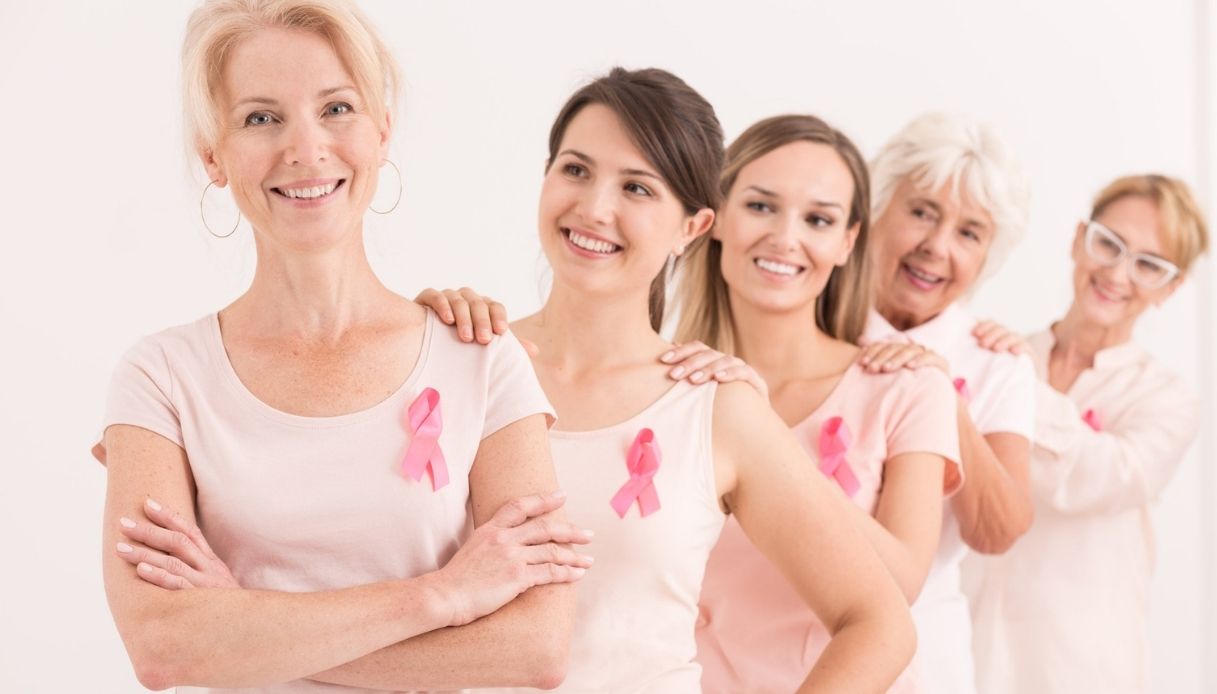Neoplasms, such as the breast cancerare not yet completely defeated and even if they frighten, we can count on notable ones progress made by researchespecially in recent years.
In the case of breast cancer, the data are not entirely encouraging: in fact, according to AIRTUM-AIOM-FONDAZIONE AIOM estimates, about 55,000 new cases are diagnosed every year in our country alone. The incidence increases, but conversely, mortality falls so 87% of women live 5 years after diagnosis, while 80% live 10 years after diagnosis.
Risk factors
There are some contributing to the development of breast cancer several factors: some editable, some not. We start with what we can change and improve for our benefit, that is lifestyle, which includes various behaviors that are an integral part of everyday life. For example, what and how we eat, if we play sports constantly or if we lead a sedentary life, if we smokeif we often drink alcohol.
Then there are others non-modifiable factorswhich can increase the risk of developing breast cancer such as:
- the age (as indicated on the AIRC websitemost breast cancers affect women over 50);
- reproductive life. Above all estrogens (hormones) play a key role in regulating the processes related to fertility, starting from the arrival of the first menstrual cycle until menopause. A pregnancy, leading to a blockage of the production of estrogen itself, can decrease the risk of developing breast cancer. During menopause, on the other hand, estrogen is no longer produced and this produces less exposure to estrogen. However, to counteract the effects caused by menopause, it is possible to use hormone therapy based on estrogen which could represent a risk for the development of breast cancer. For this reason, it is always good to evaluate with your doctor the most suitable therapy for your health conditions;
- genetics. According to the data reported by AIRTUM-AIOM-Fondazione AIOM, about 5-7% of breast cancers are linked to the presence of genetic mutations linked to the BRCA1 and BRCA2 genes.
First of all, prevention
The main shield against breast cancer remains, to date, prevention. This means adding one to the screening checks healthy lifestyle, having an eye on nutrition and other daily habits. After the age of 50, it is advisable to carry out a breast examination to be associated with a mammogram (to be performed every 2 years) or ultrasound.
With the support of the Doctor Matteo Lambertini, Oncologist and AIRC Researcherlet’s see in detail what to do to prevent breast cancer.
What to eat to prevent breast cancer
«Maintaining a healthy diet, in addition to having important benefits on general health, plays an important role in breast cancer preventionwith a risk reduction ranging from 10% to 33%.
Practice ahealthy eatingit means:
- avoid processed meats if preserved with nitrites;
- limit the Red meat and foods high in salt;
- include in daily meals a minimum of five portions (about 400g) of fruit and vegetables, as a source of vitamins and antioxidants;
- eat many legumeswhich provide good quality protein and slow down the rate of glucose absorption;
- in addition to fresh fruit, introduce a daily quota of dried fruitcharacterized by a high fiber content, capable of improving the lipid profile and glycemic response;
- use olive oil for cooking and seasoning food;
- eat oily fish, rich in polyunsaturated fatty acids, such as omega-3;
- limit ultra-refined foods, ”explains the doctor.
An example of a healthy and varied diet is the Mediterranean onethanks to which it is possible to consume all the main foods in the right quantities, thus allowing the body to naturally take on the macro and micro nutrients it needs.
When and how to do self-examination
«Self-examination it is a periodic examination of her breasts, which allows women to learn about their appearance and to notice any anomalies. It can be done alone from 20 years of ageabout once a month, preferably about a week after the end of the menstrual cycle.
Self-palpation consists of two stages:
- observation. In front of a mirror, first with the arms at the sides to observe the shape of the breast and the nipple, then with the arms raised to look for any irregularities in the profile of the breast, and then with the hands on the hips;
- the actual palpationin which the woman must pay attention to changes in the shape and / or size of one or both breasts, presence of nodules, anomalies in the nipple (which may have retraction, or with serous or blood secretions) and in the skin (depressions, orange peel skin, redness). The palpation of the breast must be performed in an upright position, with small movements of the fingers in a circular direction, with gradually increasing pressure. Finally, you have to gently squeeze the nipple between your index finger and thumb to check any liquid leaks. In the event of nodules or other alterations, it is advisable to immediately contact the attending physician or a breast specialist to receive information about the diagnostic tests to be undertaken.
Important: self-examination must in no way replace mammography and ultrasound “, explains Dr. Lambertini.
Breast ultrasound: when and how often to do it
«Breast ultrasound is a radiological examination which allows to analyze the breasts and axillary cavities using a probe that emits ultrasounds. Breast ultrasound is not recommended as a screening test instead of mammography, but it plays an important role in particular situations. especially in younger women or in women with particularly dense breast tissue in addition to mammography “, concludes the expert.
In general, therefore, the breast cancer can be countered through a good preventive strategy which we can summarize in:
- attention and improvement (when necessary) of one’s lifestyle;
- constant screening.
In case of doubts or if you notice changes or modifications of the breasts, as described above, it is advisable to consult your doctor as soon as possible.
